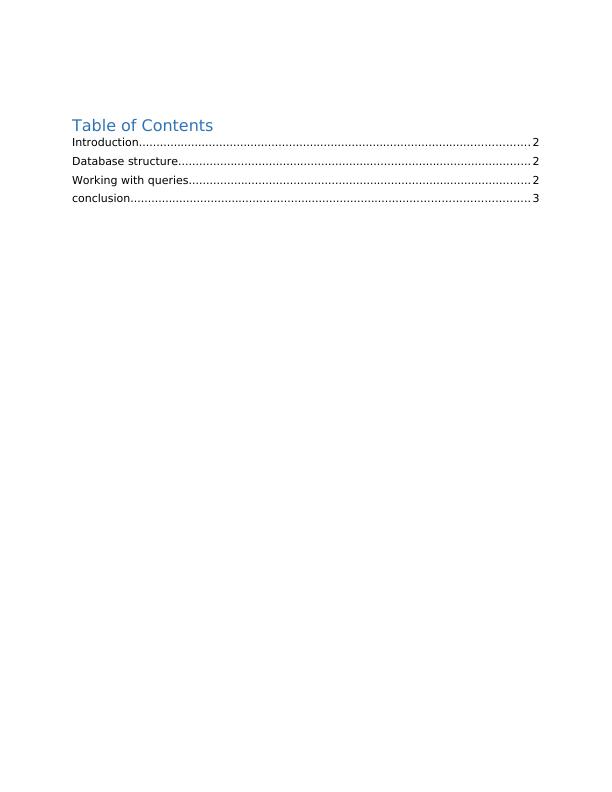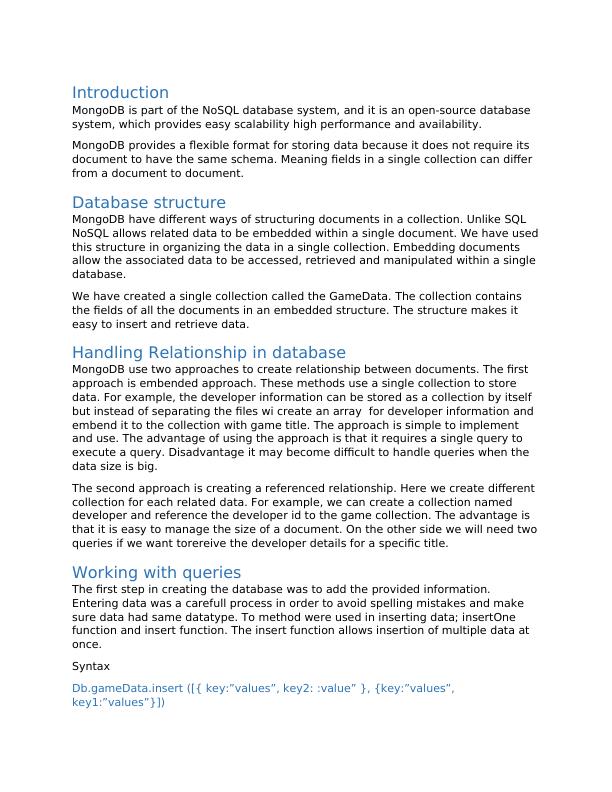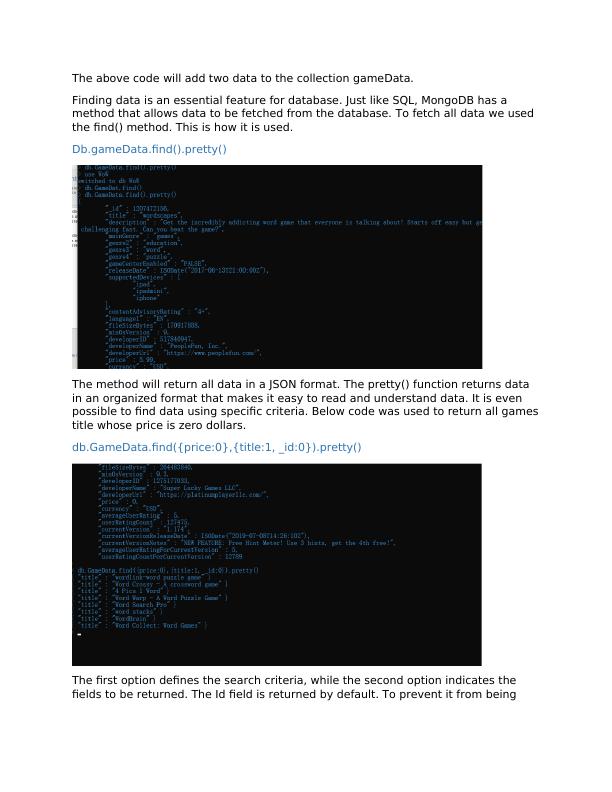Working with MongoDB: Database Structure and Querying
Create a MongoDB database and write a report for the Non-Relational Database Systems Task 3 assignment.
7 Pages1182 Words336 Views
Added on 2022-10-16
About This Document
This article discusses the database structure and querying in MongoDB. It covers how to handle relationships, work with queries, and add new fields. The advantages of using MongoDB are also highlighted, along with some recommendations for future improvements.
Working with MongoDB: Database Structure and Querying
Create a MongoDB database and write a report for the Non-Relational Database Systems Task 3 assignment.
Added on 2022-10-16
ShareRelated Documents
End of preview
Want to access all the pages? Upload your documents or become a member.
Json Schema Format Assignment-2022
|3
|803
|21
Big Data Database: MongoDB
|15
|689
|24
MongoDB:. Database created with the name – “facebookDB”
|7
|478
|21
Database Design for Games in MongoDB
|4
|1067
|418
Task-2 Report MongoDB for Movie Maniacs Database
|8
|1371
|154
Non-relational Database
|4
|820
|222



